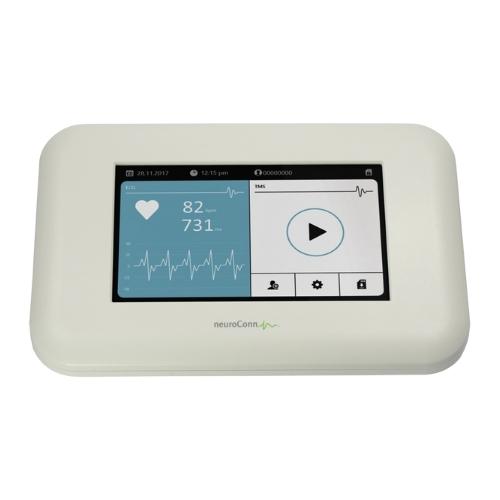Neuro-Cardiac-Guided TMS (NCG-TMS) shows promising results
July 25, 2020 - neurocare group

A new and innovative approach to more accurately target the DLPFC in rTMS treatment is currently being investigated by Research Institute Brainclinics who are about to present promising findings at the Brain Stimulation Conference in Barcelona (March 5 - 8, 2017). Tabitha Iseger will present data that validate the proof-of-concept behind the new Neuro-Cardiac-Guided TMS (NCG-TMS) approach. This method could potentially become a new way to more reliably identify the right cortical locations for rTMS stimulation in the treatment of depression.
What is Neuro-Cardiac Guided TMS (NCG TMS)?
Sufferers of depression are found to have disturbed autonomic regulation, experiencing higher hesart rate and lower heart rate variability (HRV), more pronounced in patients with severe Major Depressive Disorder (MDD). External cues such as respiration affect variability in heart rate, indicating that the heart is connected to the brain network implicated in MDD. Indeed, several studies show the connectivity between the brain structures involved in this network (CLPFC, gACC, vagal nerve) and the heart. Moreover, some research indicates that rTMS treatment leads to a decrease in heart rate thereby improving heart rate patterns in patients undergoing this treatment.
This connectivity can therefore be used to validate whether the network is correctly targeted with rTMS. Since the heart is involved, correct targeting of, for example, the DLPFC, should lead to heart rate decreases. If not, the DLPFC may not be accurately targeted. In common rTMS practice, the DLPFC is found according to the 5 (or 6) cm rule (5cm anterior from the place where thumb movement is found), or using the BEAM-F3 method. This is shown to be adequate on the group level, but individually there might be substantial variation.
Ten healthy subjects received 3 X 5sec. trains of 10Hz TMS on 3 different scalp locations on the left (F3, FC3 and C3), and 3 locations right (F4, FC4 and C4), while their ECG was recorded. The ECG was converted into R-R interval data. As expected, on the group level, the largest HR decrease was observed for both F3 and F4. This is where, in theory, the DLPFC is located. However, substantial inter-individual variability was observed. For some subjects, the location that showed the largest HR decrease was FC3 or FC4. This indicates that for those subjects, the DLPFC might be located more towards FC3 or FC4.
The DLPFC is the rTMS target for depression, and targeting it more accurately, could improve clinical response rates in depression. Moreover, the stimulation output might be lowered due to the higher specificity, and rTMS treatment will be better tolerable. This study thus confirms the earlier proposed concept of Neuro-Cardiac Guided TMS (NCG TMS).
Download here the poster by Tabitha Iseger (Neuro-Cardiac Guided TMS, NCG TMS)






